SIMULTANEOUS CITY
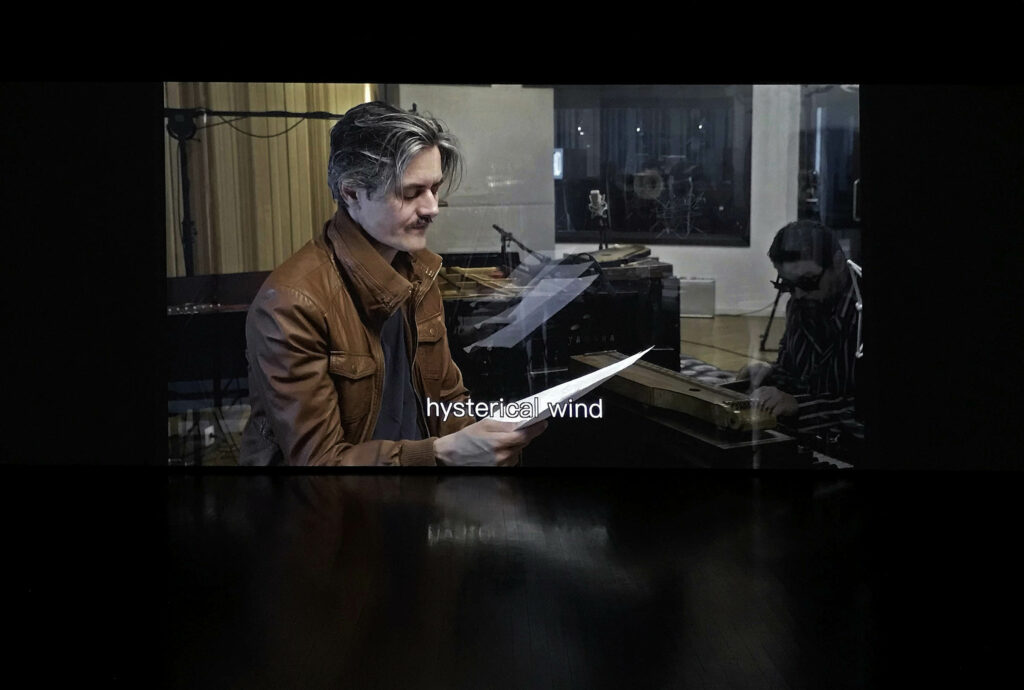
Hajnal Németh, „Simultaneous City”, 2021, two-channel video installation with quadraphonic sound
Exhibition view, Collegium Hungaricum Berlin, 2022
Photo by Barbara Antal
Two-channel video installation with quadraphonic sound, presented as a solo exhibition at Collegium Hungaricum Berlin in 2022.
Hajnal Németh’s video installation “Simultaneous City” (2021) evokes Sándor Tar’s poem “Blonde City” (1969) in a linguistic and musical context. The gist of the experimental performance shown in the two-channel video screening is the multiple simultaneous interpretation of the poem from Hungarian into German, complemented by an improvised musical performance. The video was shot in the recording studio itself, where the different sound tracks were recorded simultaneously in isolated spaces.
Actor Tamás Keresztes reads the poem by Sándor Tar in Hungarian, and his performance is translated in real time by three professional simultaneous interpreters, so that different German versions are produced at the same time by means of spontaneous interpretation. The minimal formal divergences of the translated versions do not result in any particular difference in meaning; rather, they are individual versions, different personal interpretations of the same content. The original poem itself, in contrast to the objectivity of Tar’s sociographical writings, is a piece of personal tone, conveying inner struggles and loaded with fluctuating emotions.
An essential formal element of Németh’s piece is musicality, created on the one hand by the improvisational music composed by André Vida, and on the other hand, by the rhythm and harmony of the two languages, the reading and the three simultaneous translations heard all at once.
Hungarian writer Sándor Tar worked in Dresden as a guest labourer between 1967 and 1970, and then as an instructor at a workers’ hostel in the same city between 1975 and 1976. Drawing on his experiences of living conditions at the workers’ hostel, he wrote his sociographical essay “Prospectus” in Dresden, last published by the Déri Museum in 2017. The same volume also includes the poem “Blonde City”, a 22-page work originally written in 1969 – a personal portrait of society and history, reflecting the world from the depths of the psyche in the light of love for a German woman.
In the epilogue of the poem Tar writes: „Sabine flew over again today, or never left, I no longer remember, I translated my poem for her, I couldn’t think of anything else…”
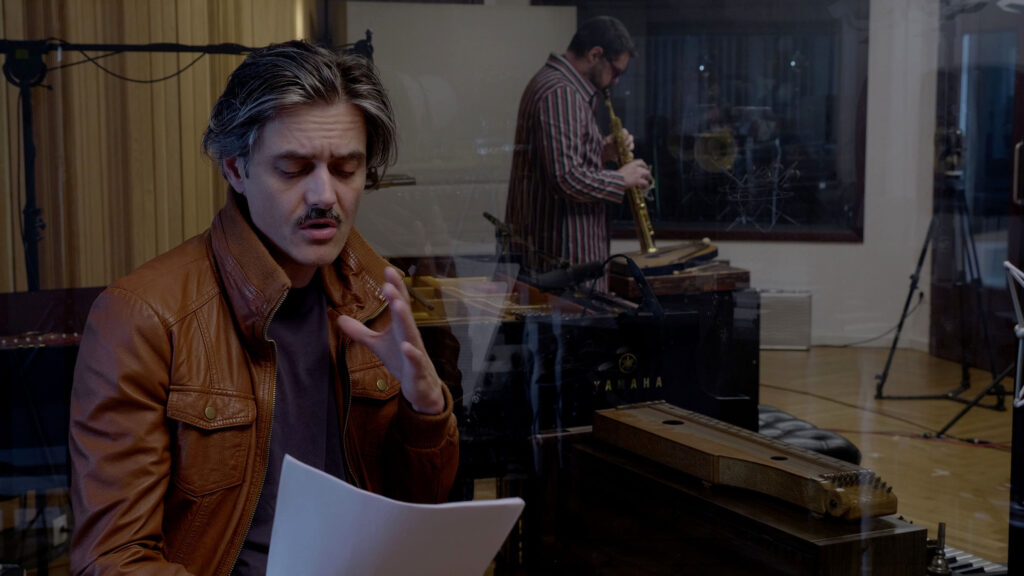
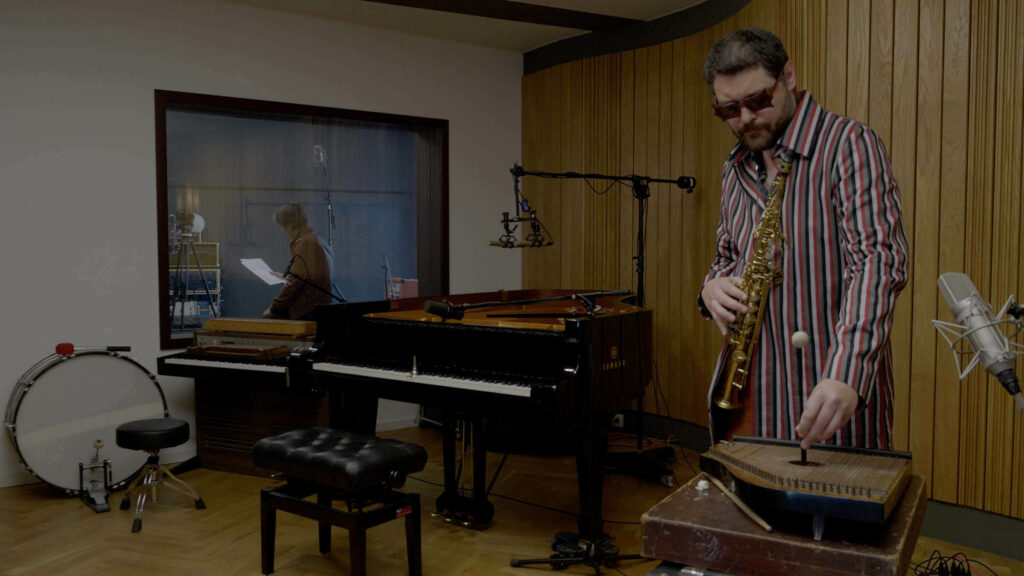
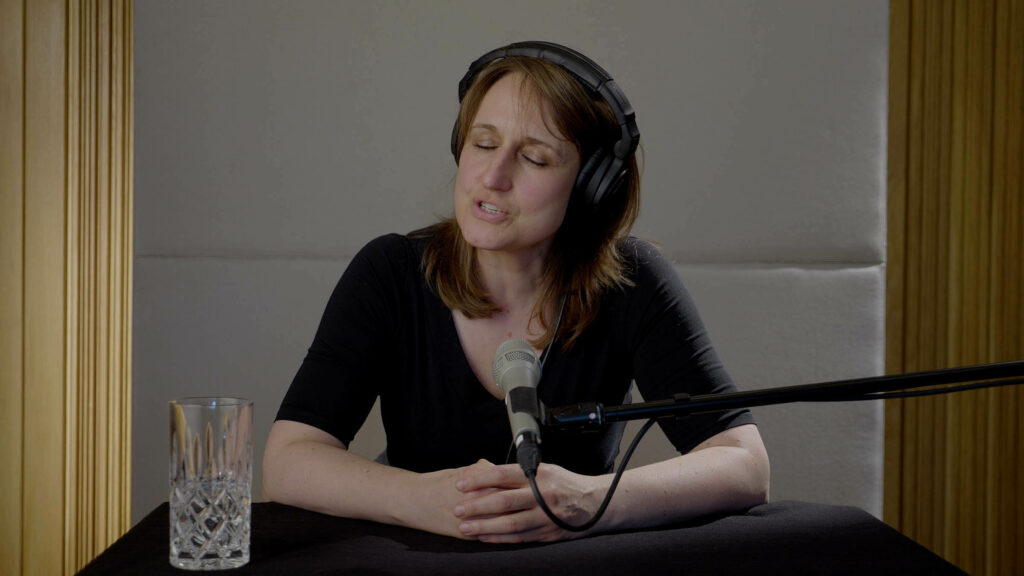
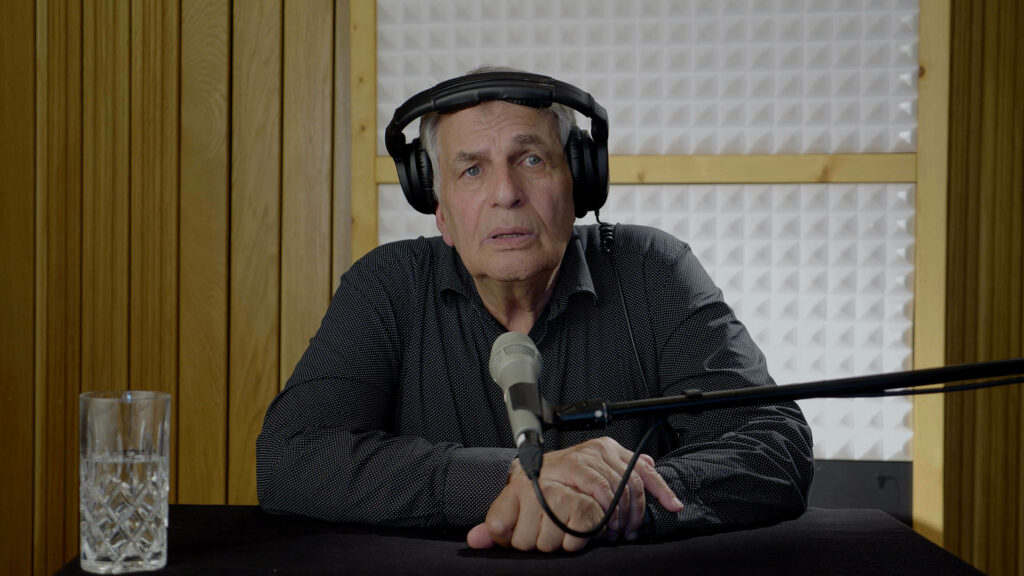
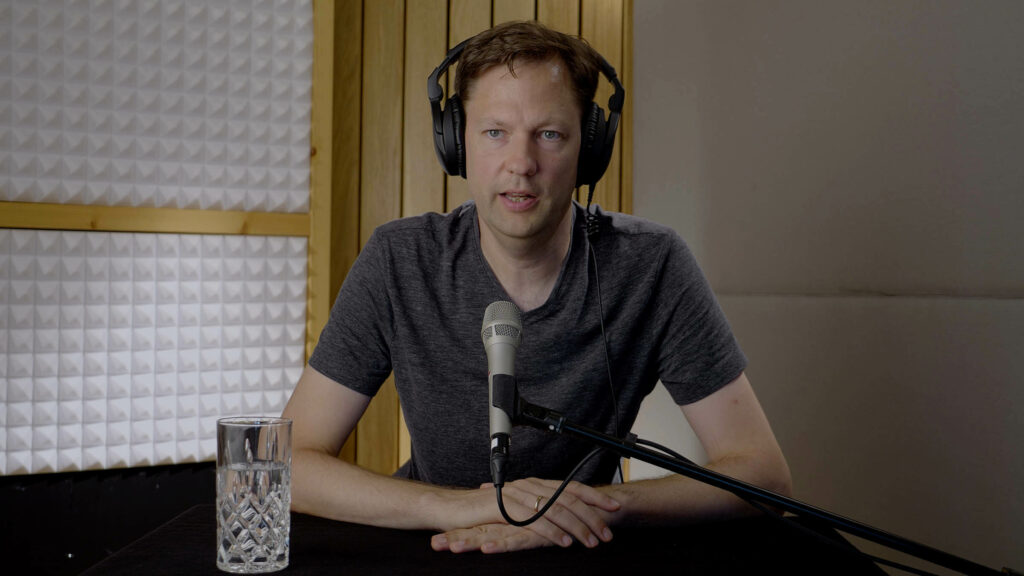
Hajnal Németh, „Simultaneous City”, 2021, two-channel video installation with quadraphonic sound, 4k, 27’37”
In the pictures: Tamás Keresztes (reading), André Vida (music), Júlia Máté, Péter Máté and Ádám Kerpel-Fronius (simultaneous translations)
Video still by Eric Ferranti
Extract from the video:
Hajnal Németh, “Simultaneous City”, 2021
Two-channel video installation with quadraphonic sound, 4k, 27’37”
Based on the poem “Blonde City” by Sándor Tar, 1969, Dresden
Contributors: Tamás Keresztes (reading), André Vida (music), Júlia Máté, Péter Máté and Ádám Kerpel-Fronius (simultaneous translations)
Camera: Eric Ferranti
Post-production: Marian Hafenstein, Jonas Beile
Recorded at Jazzanova Recording Studio, Berlin
Realised with the support of the City of Debrecen and the Csokonai Theatre, Debrecen
Further supporters of the realisation of the work include: German Cultural Forum Debrecen, Stiftung Kunstfonds, Die Beauftragte der Bundesregirung für Kultur und Medien – NEUSTART KULTUR; Péter Barta – private collector
Cooperating partner: CHB – Collegium Hungaricum Berlin
Special thanks to: Péter Gemza, István Puskás, Dr. Márta Nagy


